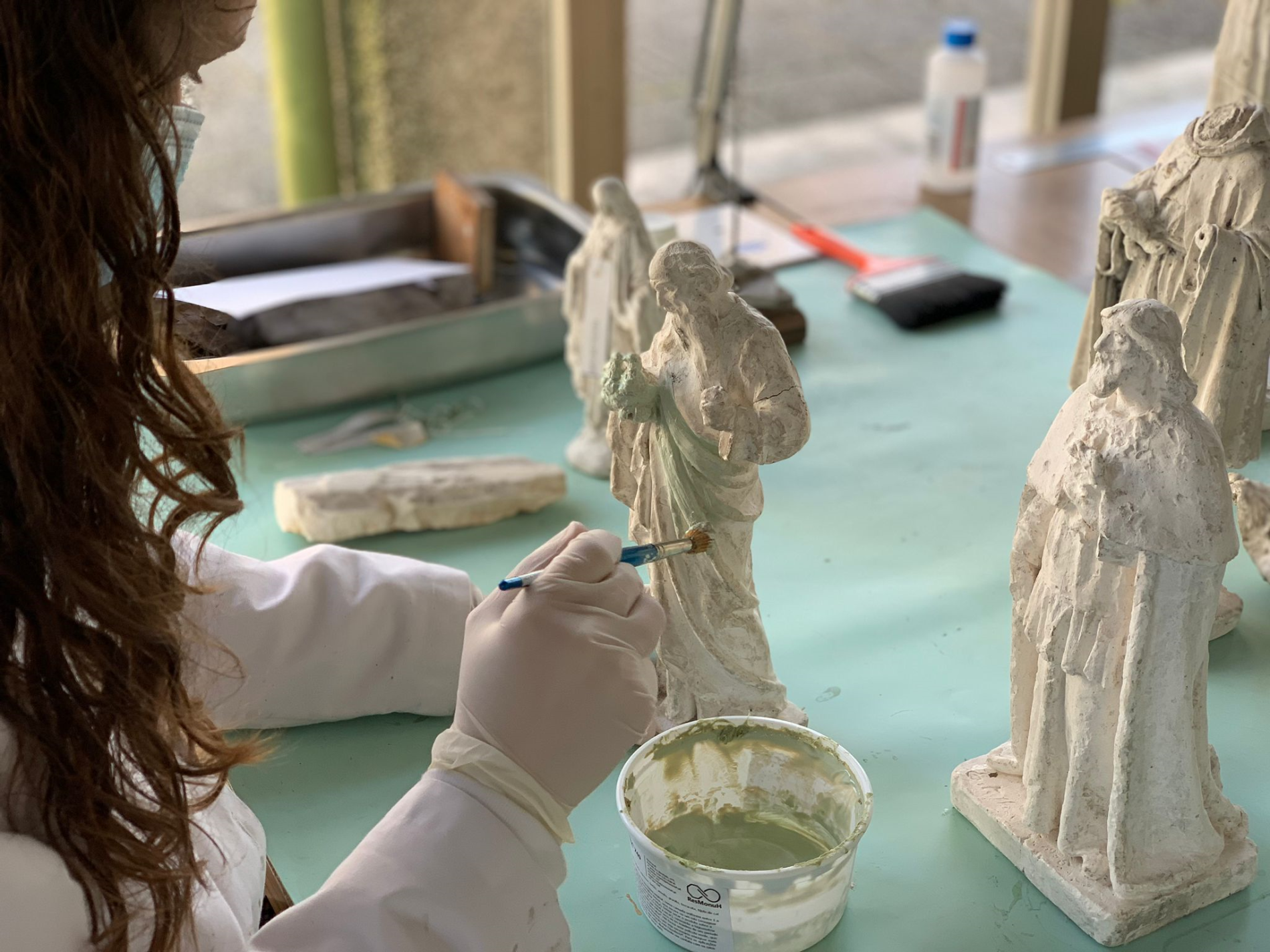The Conservation and Restoration Clinic of Portucalense University consolidates its mission of contributing to the maintenance of heritage, having been chosen to proceed with the restoration of a collection of models of religious figures and plaster replicas, mostly from the twentieth century.
This is an important collection of Sacred Art, consisting of drawings, sculpture models and carvings, acquired by the Municipality of Trofa from the workshop of José Ferreira Thedim.
The workshop, located in the parish of Coronado, belonged to several generations of the Thedim family, who were renowned in the sculpture of sacred art. José Ferreira Thedim (1992-1971) became known for having made the image of Our Lady of the Rosary of Fátima, known worldwide for the Virgin of the Chapel of Apparitions in Fátima.
The collection includes about 800 small pieces made of plaster and unfired clay. For the intervention, 306 pieces of sacred art figures were selected for the production of larger images, such as figures, and parts of figures, namely limbs, hands and faces replicated in plaster by a moulding process.
“Most of the pieces presented disintegration of the superficial layer of the clay supports and alteration of the plaster surface by deposits of dirt, fragmentation of some clay models and oxidation of the metallic supports”, indicates Professor Nuno Farinhote, one of the people responsible for this project.
He explains that the Conservation and Restoration Clinic carried out “a photographic work, mapping and identification of pathologies, cleaning of the plaster, cleaning and consolidation of the clay, adhesive bonding and assembly of fragments, stabilization of the metal supports and replacement in the set, reinforcement of the disinfestation of the wood of the squares.
“With this intervention, we managed to physically stabilise the pieces, ensuring their aesthetic and structural continuity, increasing the possibility of handling and allowing the possibility of transport and public exhibition, or of being integrated into a possible museum space.”

